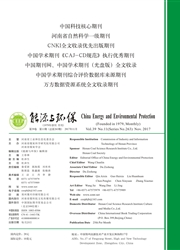

 中文摘要:
中文摘要:
传统的结构检测方法一般需要钻孔取样,对结构本身有一定的破坏作用,而无损检测方法在检测过程中不破坏结构本身,这项技术的重要性日益显著.结合扩展有限元法和人工蜂群智能优化算法的优点,建立了结构内部缺陷(夹杂)的反演分析模型,为结构的无损检测技术提供了一条新的途径.扩展有限元法通过引入非连续位移模式可以在不重新划分网格的情况下通过改变水平集函数反映缺陷(夹杂)的位置及大小,避免了反演分析每次迭代过程中的网格重剖分,人工蜂群智能优化算法在每次迭代中都采用全局和局部搜索,找到最优解的概率大大增加并可很好地避免局部最优,因此,扩展有限元法与人工蜂群智能优化算法的结合有效地减少了反演分析的计算工作量.通过若干算例的分析表明:建立的反演分析模型能准确地探测结构内部存在的单个缺陷(夹杂).
 英文摘要:
英文摘要:
In the traditional structure detection method, it is generally required to sample the structure by drilling, which will lead to the structure with some additional damage. However, the nondestructive testing method will not destroy the structure itself in the detection process. This paper proposes an approach for detecting an internal defect or inclusion by using the extended finite element methods(XFEM) and the artificial bee colony(ABC) algorithm to provide a new way for the nondestructive testing of the structure. The XFEM approximation contains enriched elements in the enriched sub-domain for capturing discontinuities. The method can reflect the location and size of the defect or inclusion by the level set function without re-meshing. Thus, the main advantage of the proposed approach is that at each iteration process,the XFEM alleviates the need for remeshing the domain, and the ABC algorithm can effectively avoid the appearance of the local optimum by the global and local searching strategy. The XFEM combined with ABC intelligent optimization algorithm can effectively reduce the amount of calculation for inverse analysis. The results show that the proposed approach can effectively detect the internal defect or inclusion in materials.
 同期刊论文项目
同期刊论文项目
 同项目期刊论文
同项目期刊论文
 期刊信息
期刊信息
